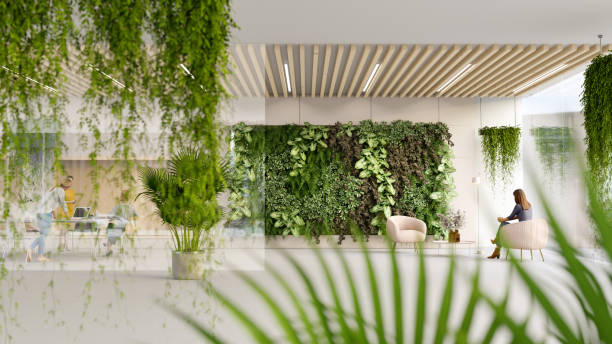Water conservation is a critical consideration in construction projects, given the significant impact that construction activities can have on water resources. Implementing effective water conservation strategies not only reduces environmental impact but also helps to comply with regulations and can lead to cost savings. This guide explores various strategies for conserving water throughout construction projects, from planning and design to implementation and maintenance.
Importance of Water Conservation in Construction
Water is a vital resource, and its conservation is crucial for sustainable development. In construction, water is used in various processes, including mixing concrete, controlling dust, and maintaining equipment. Effective water conservation strategies can help:
- Reduce Environmental Impact: Lower the strain on local water supplies and minimize pollution.
- Comply with Regulations: Meet legal requirements and industry standards for water use.
- Cut Costs: Decrease water-related expenses and avoid fines for non-compliance.
- Enhance Reputation: Demonstrate environmental responsibility and attract environmentally-conscious clients.
Water Conservation Strategies in Construction
1. Planning and Design
Site Assessment
Conduct a comprehensive site assessment to understand the local water conditions and identify opportunities for conservation.
- Water Availability: Assess local water resources and availability.
- Soil Conditions: Evaluate soil types and their water retention properties.
Water-Efficient Design
Incorporate water-efficient design principles into the planning and design phases of the construction project.
- Rainwater Harvesting: Design systems to collect and reuse rainwater for irrigation and other non-potable uses.
- Stormwater Management: Implement best practices for managing stormwater to reduce runoff and promote infiltration.
- Water-Efficient Landscaping: Use drought-tolerant plants and efficient irrigation systems.
2. Construction Practices
Efficient Water Use
Adopt practices to minimize water use during construction activities.
- Concrete Mixing: Use batch mixers with precise water measurements to avoid excess water use.
- Dust Control: Employ dust control measures that use minimal water, such as dry dust suppressants or vacuum systems.
- Equipment Maintenance: Regularly maintain equipment to prevent leaks and minimize water waste.
Water Recycling and Reuse
Implement systems to recycle and reuse water on-site.
- Water Recycling Systems: Install systems to capture and treat water for reuse in construction activities.
- On-Site Storage: Use storage tanks to collect and store water for later use, such as irrigation or dust control.
Temporary Water Management
Manage water use during temporary construction activities to reduce waste.
- Temporary Facilities: Ensure that temporary facilities, such as washing stations and toilets, use water efficiently and have proper drainage systems.
- Water-Conserving Fixtures: Install water-saving fixtures and fittings in temporary facilities.
3. Wastewater Management

On-Site Treatment
Treat wastewater generated during construction to reduce its impact on the environment.
- Sediment Basins: Use sediment basins to capture and treat runoff water before discharge.
- Oil and Grease Traps: Install traps to remove contaminants from wastewater.
Proper Disposal
Ensure proper disposal of wastewater and avoid contamination of local water sources.
- Compliance: Follow local regulations for the disposal of construction-related wastewater.
- Monitoring: Regularly monitor wastewater quality and implement corrective measures as needed.
4. Water-Conserving Materials and Technologies
Water-Efficient Equipment
Use water-efficient equipment and technologies to reduce water consumption.
- Low-Flow Fixtures: Install low-flow faucets and toilets in construction site facilities.
- Efficient Irrigation Systems: Use drip irrigation or other efficient systems for landscape watering.
Sustainable Materials
Incorporate materials that contribute to water conservation in construction projects.
- Permeable Paving: Use permeable materials for pavements and driveways to allow water infiltration and reduce runoff.
- Water-Efficient Landscaping: Choose materials and plants that require minimal irrigation.
5. Training and Awareness
Educate Workers
Provide training and resources to workers on water conservation practices and the importance of water management.
- Training Programs: Develop and implement training programs for construction staff on water conservation techniques and best practices.
- Signage: Use clear signage to remind workers of water-saving measures and policies.
Promote Awareness
Foster a culture of water conservation among all project stakeholders.
- Communication: Regularly communicate the importance of water conservation to all involved parties.
- Incentives: Offer incentives or recognition for teams and individuals who demonstrate effective water-saving practices.
6. Monitoring and Reporting
Track Water Use
Monitor and track water usage throughout the construction project to identify areas for improvement.
- Water Meters: Install water meters to measure and record water consumption.
- Data Analysis: Analyze water use data to identify trends and opportunities for further conservation.
Report and Review
Regularly review water use reports and make adjustments to improve conservation efforts.
- Performance Reviews: Conduct periodic reviews of water conservation performance and adjust strategies as needed.
- Reporting: Provide transparent reporting on water use and conservation efforts to stakeholders and regulatory agencies.
Case Studies and Examples
Example 1: Residential Construction Project
A residential construction project implemented rainwater harvesting systems to collect and reuse rainwater for landscaping and irrigation. By integrating efficient irrigation practices and low-flow fixtures in temporary facilities, the project reduced water consumption by 30% compared to similar projects without these measures.
Example 2: Commercial Building Project
A commercial building project utilized on-site water recycling systems to capture and treat wastewater for reuse in construction activities. The project also incorporated permeable paving and water-efficient landscaping, resulting in a significant reduction in stormwater runoff and improved site sustainability.
Conclusion
Water conservation is a vital component of sustainable construction practices. By implementing effective water conservation strategies during planning, construction, and maintenance, construction projects can reduce their environmental impact, comply with regulations, and achieve cost savings. From efficient water use and recycling to proper wastewater management and the adoption of water-conserving materials, there are numerous opportunities to conserve water and promote sustainability in construction. Embracing these strategies will contribute to the responsible use of water resources and support the development of more sustainable and resilient communities.




